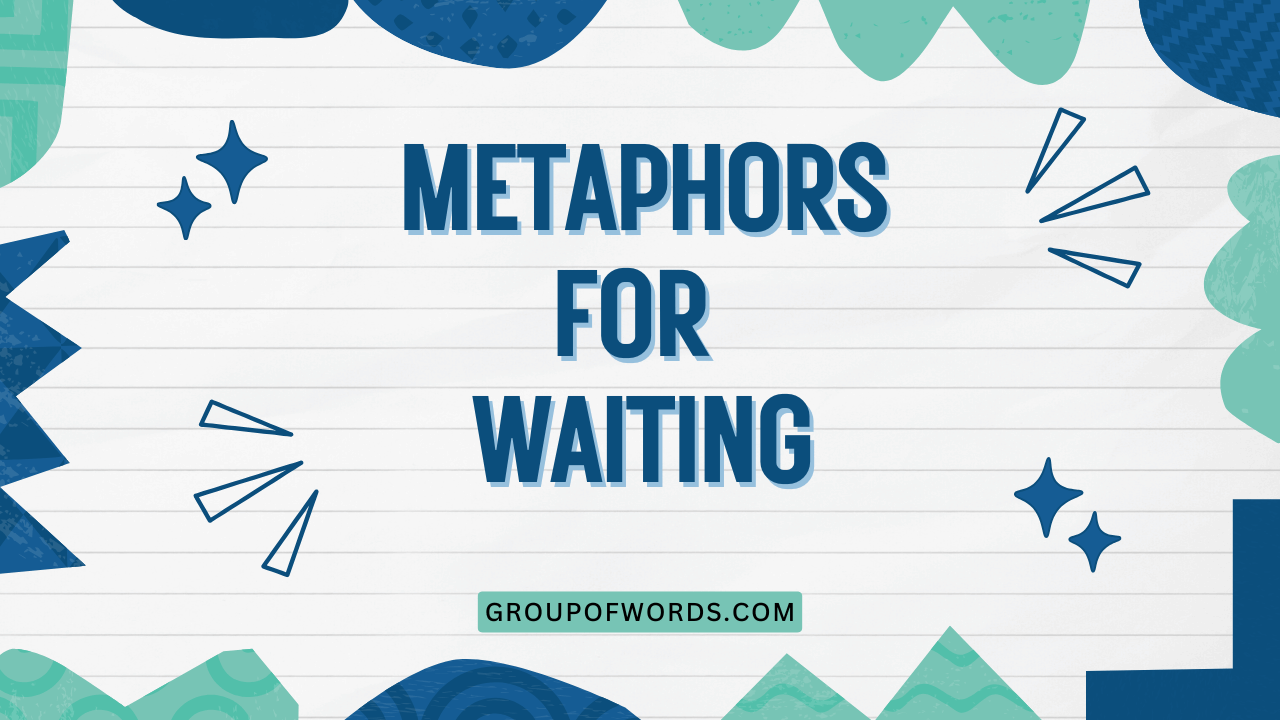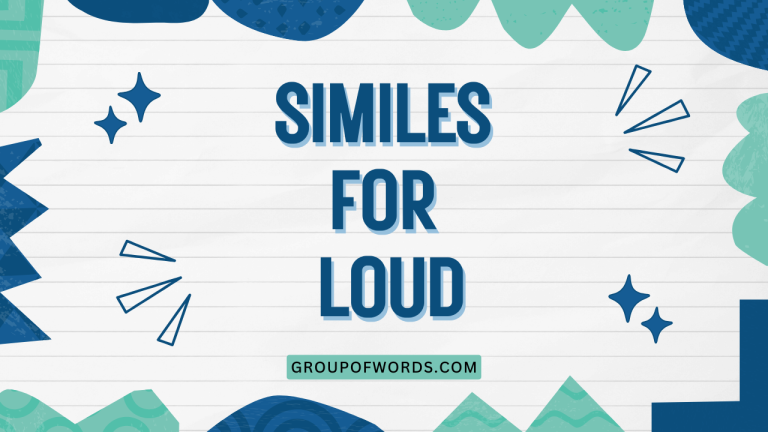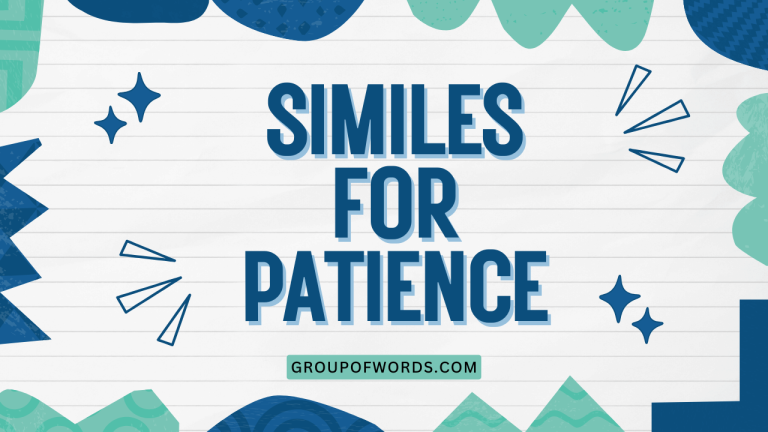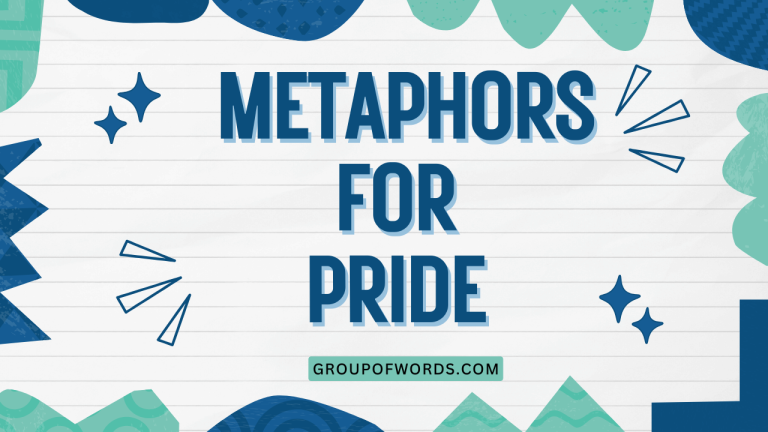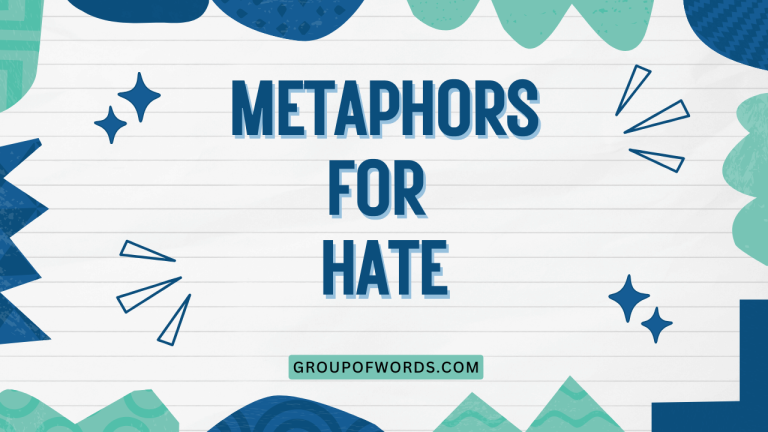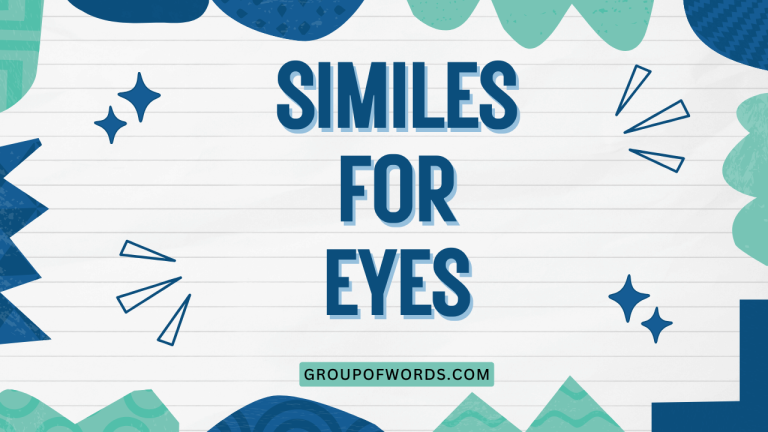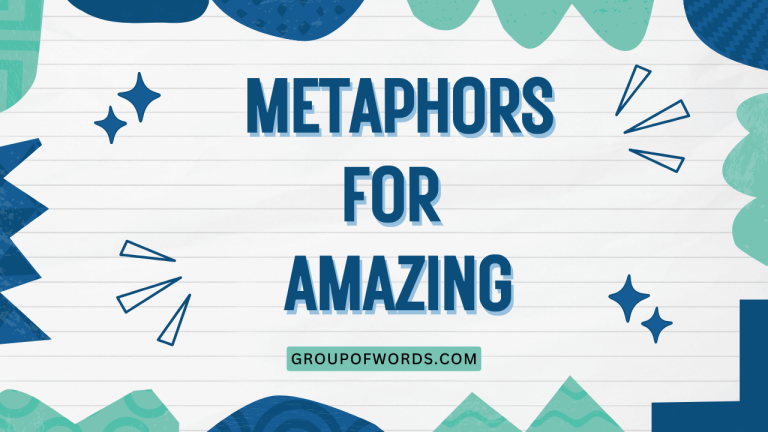Metaphors for Waiting: A Comprehensive Guide
Waiting is an inevitable part of life, and the English language offers a rich tapestry of metaphors to describe this often-frustrating experience. Understanding these metaphors not only enhances your comprehension of the language but also allows you to express yourself more vividly and creatively.
This article delves into the world of metaphors for waiting, exploring their meanings, structures, and usage. Whether you are an English language learner or a native speaker seeking to refine your linguistic skills, this guide will provide you with valuable insights and practical examples.
This article is designed for anyone who wants to improve their understanding and use of English metaphors, particularly those related to the concept of waiting. It’s suitable for ESL/EFL students, writers, and anyone interested in language and figurative speech.
By the end of this article, you’ll be able to recognize, interpret, and use a variety of metaphors to describe the experience of waiting.
Table of Contents
- Definition of Metaphors for Waiting
- Structural Breakdown of Waiting Metaphors
- Categories of Metaphors for Waiting
- Examples of Metaphors for Waiting
- Usage Rules for Metaphors of Waiting
- Common Mistakes When Using Waiting Metaphors
- Practice Exercises
- Advanced Topics in Waiting Metaphors
- Frequently Asked Questions
- Conclusion
Definition of Metaphors for Waiting
A metaphor is a figure of speech that directly compares two seemingly unrelated things, asserting that one thing is another. It’s not meant to be taken literally but rather to create a vivid image or convey a deeper meaning. Metaphors for waiting, therefore, use comparisons to other concepts to describe the experience of waiting, often highlighting its duration, emotional impact, or perceived lack of progress.
In the context of grammar, metaphors for waiting function as descriptive elements that enrich language. They can be nouns, verbs, adjectives, or even entire phrases, depending on the specific metaphor used.
Their primary function is to add color and depth to communication, making it more engaging and relatable. They are often used in literature, poetry, and everyday conversation to express the frustration, anticipation, or boredom associated with waiting.
For example, saying “The minutes crawled by” isn’t literally true, but it effectively conveys the feeling that time is passing very slowly. This is a metaphor because it compares the movement of minutes to the slow, deliberate movement of a crawling creature.
Without the metaphor, you might just say “The time passed slowly,” which lacks the same impact.
Structural Breakdown of Waiting Metaphors
Metaphors for waiting, like all metaphors, typically consist of two main elements: the tenor and the vehicle. The tenor is the subject of the metaphor (in this case, waiting), and the vehicle is the object or concept to which the subject is being compared.
Consider the metaphor “Waiting is a slow burn.” Here, “waiting” is the tenor, and “a slow burn” is the vehicle. The metaphor suggests that waiting is similar to a slow-burning fire, implying that it’s a gradual and possibly painful process.
The structure of a waiting metaphor can also involve different grammatical forms. It could be a simple noun phrase (e.g., “a waiting game”), a verb phrase (e.g., “to be stuck in limbo”), or an entire sentence (e.g., “Waiting felt like watching paint dry”).
The specific structure depends on the intended effect and the context in which the metaphor is used.
Effective waiting metaphors often rely on shared cultural understandings or common experiences. For instance, everyone understands the frustration of being stuck in traffic, so a metaphor like “Waiting was like being trapped in a traffic jam” is easily relatable and impactful.
The strength of a metaphor lies in its ability to create a clear and resonant connection between the tenor and the vehicle.
Categories of Metaphors for Waiting
Metaphors for waiting can be categorized based on the aspect of waiting they emphasize. Here are some common categories:
Time-Based Metaphors
These metaphors focus on the duration and passage of time while waiting. They often convey the feeling that time is moving slowly or quickly, depending on the context and the speaker’s perception.
Physical State Metaphors
These metaphors describe the physical sensations or conditions associated with waiting, such as restlessness, tension, or exhaustion. They often use imagery related to confinement, immobility, or physical strain.
Emotional State Metaphors
These metaphors highlight the emotional impact of waiting, such as frustration, anxiety, boredom, or hope. They often use imagery related to emotional turmoil, anticipation, or resignation.
Activity-Based Metaphors
These metaphors compare waiting to specific activities or situations that are known for being tedious, unproductive, or frustrating. They often emphasize the perceived lack of progress or the feeling of being stuck in a monotonous routine.
Nature-Based Metaphors
These metaphors draw parallels between waiting and natural phenomena, such as the changing of seasons, the growth of plants, or the flow of water. They often convey a sense of inevitability, patience, or the cyclical nature of time.
Examples of Metaphors for Waiting
To illustrate the different categories of metaphors for waiting, here are some detailed examples:
Time-Based Metaphor Examples
These metaphors for waiting directly relate to the concept of time, often exaggerating its passage or stagnation during the waiting period. They help express the subjective experience of time slowing down or speeding up depending on the situation.
The following table provides various examples of time-based metaphors used to describe waiting, each with a brief explanation and a sentence demonstrating its use.
| Metaphor | Explanation | Example Sentence |
|---|---|---|
| Time stood still. | Time seemed to stop completely. | While waiting for the test results, time stood still. |
| The minutes crawled. | Each minute felt incredibly long. | In the waiting room, the minutes crawled by. |
| Time dripped like molasses. | Time passed very slowly, like thick molasses dripping. | Waiting for the package to arrive, time dripped like molasses. |
| An eternity passed. | The waiting period felt extremely long. | It felt like an eternity passed before the doctor called my name. |
| Time stretched out before me. | The future waiting period seemed vast and unending. | With no news in sight, time stretched out before me, an empty expanse. |
| The clock watched me expectantly. | The clock seemed to be mocking the slow passage of time. | The clock watched me expectantly as I waited for the interview call. |
| Each second was a lifetime. | Every second felt incredibly long and significant. | Waiting for the verdict, each second was a lifetime. |
| The hours dragged on. | The hours passed slowly and tediously. | The hours dragged on as we waited for the storm to pass. |
| Time was a snail. | Time moved at an incredibly slow pace. | Waiting for the government approval, time was a snail. |
| The days blurred together. | The waiting period was so monotonous that the days seemed indistinguishable. | While waiting for the project to start, the days blurred together. |
| Time was a frozen river. | Time seemed to be unmoving and stagnant. | While waiting for the ice to thaw, time was a frozen river. |
| The calendar mocked me. | The calendar served as a constant reminder of the long wait ahead. | The calendar mocked me as I crossed off each day waiting for vacation. |
| Time oozed by. | Time passed very slowly and sluggishly. | Waiting for the system to update, time oozed by. |
| The timeline was a desert. | The waiting period felt barren and devoid of activity. | During the quiet period, the timeline was a desert. |
| Time hung heavy in the air. | The atmosphere was thick with anticipation and the slow passage of time. | Time hung heavy in the air as we awaited the announcement. |
| The clock hands were glued. | The clock hands appeared to be stuck, symbolizing the slow passage of time. | It felt like the clock hands were glued as I waited for his call. |
| Time was a thick fog. | Time felt disorienting and slow, like navigating through thick fog. | While recovering, time was a thick fog. |
| The days were an endless loop. | The waiting period felt repetitive and never-ending. | Waiting for the trial, the days were an endless loop. |
| Time was a dripping faucet. | Time passed slowly and annoyingly, like the constant drip of a faucet. | Time was a dripping faucet as I waited for the email. |
| The sun refused to move. | The day seemed to stretch on without end, as if the sun was not progressing. | That day, it felt like the sun refused to move. |
Physical State Metaphor Examples
These metaphors use physical sensations and conditions to describe the experience of waiting. They often focus on the discomfort, restlessness, or exhaustion that can accompany a prolonged waiting period.
Below is a table illustrating physical state metaphors for waiting, providing explanations and example sentences for each.
| Metaphor | Explanation | Example Sentence |
|---|---|---|
| I was on pins and needles. | I was extremely anxious and tense. | Waiting for the interview results, I was on pins and needles. |
| My heart was in my throat. | I felt a strong sense of anxiety and fear. | As the surgery began, my heart was in my throat. |
| I was glued to the spot. | I was unable to move due to anticipation or anxiety. | I was glued to the spot, waiting for the announcement. |
| I felt like a coiled spring. | I was tense and ready to react at any moment. | Waiting for the signal, I felt like a coiled spring. |
| I was walking on eggshells. | I was being extremely careful and cautious. | While waiting for his reaction, I was walking on eggshells. |
| My stomach churned. | I felt nauseous due to nervousness. | Before the big race, my stomach churned. |
| I was a statue. | I remained perfectly still, either by choice or necessity. | I was a statue, trying not to make a sound. |
| I was a prisoner of the waiting room. | I felt trapped and confined by the waiting period. | I was a prisoner of the waiting room, longing for freedom. |
| I felt like I was holding my breath. | I was anticipating something with great anxiety. | I felt like I was holding my breath, waiting for the news. |
| My hands were clammy. | My hands were sweaty due to nervousness. | Waiting to go on stage, my hands were clammy. |
| I was a puppet on a string. | I felt controlled by the circumstances of the wait. | I was a puppet on a string, waiting for instructions. |
| I was a stone. | I felt numb and unresponsive. | Waiting for the results, I was a stone. |
| I was a ticking time bomb. | I felt like I was about to explode with frustration or impatience. | Waiting for the project to be approved, I was a ticking time bomb. |
| I felt like I was sinking. | I felt overwhelmed and helpless. | Waiting for help to arrive, I felt like I was sinking. |
| I was a leaf in the wind. | I felt directionless and at the mercy of external forces. | Waiting for the decision, I was a leaf in the wind. |
| My blood ran cold. | I felt a sudden rush of fear or dread. | Waiting for the diagnosis, my blood ran cold. |
| I was a caged animal. | I felt trapped and restless. | Waiting for the lockdown to end, I was a caged animal. |
| I felt like I was in quicksand. | I felt stuck and unable to make progress. | Waiting for the funding, I felt like I was in quicksand. |
| My legs were lead. | My legs felt heavy and difficult to move. | Waiting for the starting gun, my legs were lead. |
| I was a statue frozen in place. | Complete immobility due to fear or shock. | When the news broke, I was a statue frozen in place. |
Emotional State Metaphor Examples
These metaphors capture the emotional toll of waiting, highlighting feelings such as frustration, anxiety, hope, or boredom. They provide a way to express the internal experience of waiting in a relatable and vivid manner.
The following table presents emotional state metaphors for waiting, with explanations and example sentences.
| Metaphor | Explanation | Example Sentence |
|---|---|---|
| Hope was a fragile bird. | Hope was delicate and easily lost. | While waiting for good news, hope was a fragile bird. |
| Despair was a heavy cloak. | Despair felt oppressive and burdensome. | Waiting for a response, despair was a heavy cloak. |
| Patience wore thin. | One’s ability to tolerate waiting diminished. | After hours of waiting, patience wore thin. |
| Anxiety gnawed at me. | Anxiety caused persistent worry and unease. | Waiting for the results, anxiety gnawed at me. |
| Boredom was a thick fog. | Boredom felt overwhelming and stifling. | Waiting for the delayed flight, boredom was a thick fog. |
| Frustration simmered. | Frustration built up slowly but steadily. | As the delay continued, frustration simmered. |
| Hope flickered like a candle. | Hope was weak and unsteady. | Even after the setbacks, hope flickered like a candle. |
| Desperation clawed at me. | Desperation caused intense and urgent feelings. | Waiting for a lifeline, desperation clawed at me. |
| Doubt crept in like a thief. | Doubt entered subtly and stealthily. | While waiting for a breakthrough, doubt crept in like a thief. |
| Resignation settled in. | Acceptance of the situation occurred. | After many failed attempts, resignation settled in. |
| Anticipation was a tightrope. | Anticipation felt precarious and nerve-wracking. | Waiting for the proposal to be accepted, anticipation was a tightrope. |
| Worry was a constant companion. | Worry stayed with me continuously. | Waiting for her return, worry was a constant companion. |
| Anger boiled beneath the surface. | Anger was restrained but intense. | As the injustice continued, anger boiled beneath the surface. |
| Fear was a cold hand on my heart. | Fear felt chilling and gripping. | Waiting for the diagnosis, fear was a cold hand on my heart. |
| Joy danced just out of reach. | Happiness seemed close but unattainable. | Waiting for the reunion, joy danced just out of reach. |
| Sadness was a deep well. | Sadness felt profound and unending. | Waiting for the storm to pass, sadness was a deep well. |
| Peace was a distant shore. | Peace felt far away and difficult to reach. | Waiting for the conflict to end, peace was a distant shore. |
| Frustration was a locked door. | Frustration felt like an insurmountable barrier. | Waiting for the permit, frustration was a locked door. |
| Disappointment was a bitter pill. | Disappointment felt unpleasant and difficult to accept. | Waiting for recognition, disappointment was a bitter pill. |
| Excitement buzzed beneath my skin. | Intense excitement made me feel restless. | Waiting for the concert to start, excitement buzzed beneath my skin. |
Activity-Based Metaphor Examples
These metaphors compare waiting to activities that are inherently slow, unproductive, or tedious, emphasizing the frustrating lack of progress during the waiting period. They often highlight the feeling of being stuck or unproductive.
The following table presents activity-based metaphors for waiting, with explanations and example sentences.
| Metaphor | Explanation | Example Sentence |
|---|---|---|
| Waiting was like watching paint dry. | Waiting was extremely boring and uneventful. | The meeting was so dull, waiting was like watching paint dry. |
| Waiting was like watching grass grow. | Waiting was slow and uneventful. | The legislative process is so slow, waiting is like watching grass grow. |
| Waiting was a waiting game. | Waiting required patience and strategic timing. | Getting the promotion is a waiting game. |
| Waiting was like being stuck in traffic. | Waiting was frustrating and unproductive. | The website was so slow, waiting was like being stuck in traffic. |
| Waiting was like wading through treacle. | Waiting was slow and difficult. | Getting the paperwork done was like wading through treacle. |
| Waiting was like herding cats. | Waiting was chaotic and unmanageable. | Trying to organize the volunteers was like herding cats. |
| Waiting was like being on hold. | Waiting was frustrating and unproductive. | Calling customer service is like being on hold forever. |
| Waiting was like running in place. | Waiting felt like exerting effort without making progress. | Working on the stalled project was like running in place. |
| Waiting was like pushing water uphill. | Waiting felt futile and exhausting. | Trying to change his mind was like pushing water uphill. |
| Waiting was like fishing in an empty pond. | Waiting felt pointless and unproductive. | Searching for a job in this market is like fishing in an empty pond. |
| Waiting was like searching for a needle in a haystack. | Waiting felt nearly impossible and time-consuming. | Finding the right information was like searching for a needle in a haystack. |
| Waiting was like climbing a never-ending staircase. | Waiting felt exhausting and without a clear end. | Navigating the bureaucracy was like climbing a never-ending staircase. |
| Waiting was like trying to catch the wind. | Waiting felt impossible and elusive. | Trying to control the situation was like trying to catch the wind. |
| Waiting was like chasing shadows. | Waiting felt pointless and without substance. | Pursuing that goal was like chasing shadows. |
| Waiting was like knitting fog together. | Waiting felt unproductive and absurd. | Trying to make sense of his explanation was like knitting fog together. |
| Waiting was like rearranging deck chairs on the Titanic. | Waiting felt like a trivial activity in the face of impending disaster. | Focusing on minor details was like rearranging deck chairs on the Titanic. |
| Waiting was like talking to a brick wall. | Waiting felt unproductive and unresponsive. | Trying to get him to understand was like talking to a brick wall. |
| Waiting was like trying to nail jelly to a tree. | Waiting felt impossible and futile. | Trying to enforce the policy was like trying to nail jelly to a tree. |
| Waiting was like trying to hold back the tide. | Waiting felt overwhelming and unstoppable. | Trying to prevent the change was like trying to hold back the tide. |
| Waiting was like trying to empty the ocean with a spoon. | Waiting felt pointless and overwhelming. | Trying to solve the problem alone was like trying to empty the ocean with a spoon. |
Nature-Based Metaphor Examples
These metaphors use elements of nature to describe the experience of waiting, often drawing parallels between the natural world and the cyclical or inevitable aspects of waiting. They can convey a sense of patience, inevitability, or the slow passage of time.
The following table presents nature-based metaphors for waiting, with explanations and example sentences.
| Metaphor | Explanation | Example Sentence |
|---|---|---|
| Waiting was like watching a tree grow. | Waiting was a slow and gradual process. | Developing the project was like watching a tree grow. |
| Waiting was like the changing of the seasons. | Waiting was an inevitable and cyclical process. | Life is like the changing of the seasons, with periods of waiting. |
| Waiting was like a dormant seed. | Waiting implied potential and eventual growth. | The idea remained like a dormant seed, waiting for the right time. |
| Waiting was like the calm before the storm. | Waiting was a period of quiet anticipation before a significant event. | The silence was like the calm before the storm. |
| Waiting was like the ebb and flow of the tide. | Waiting was a natural and rhythmic part of a larger process. | Life is like the ebb and flow of the tide, with times of activity and rest. |
| Waiting was like a long winter. | Waiting was a period of dormancy and cold. | The economic downturn was like a long winter. |
| Waiting was like a desert drought. | Waiting was a period of scarcity and hardship. | The lack of funding was like a desert drought. |
| Waiting was like a mountain sunrise. | Waiting led to a beautiful and rewarding outcome. | The long journey was like a mountain sunrise, leading to a breathtaking view. |
| Waiting was like a river flowing to the sea. | Waiting was a natural and inevitable journey. | Life is like a river flowing to the sea, with times of waiting and movement. |
| Waiting was like a caterpillar in a cocoon. | Waiting was a period of transformation and preparation. | The period of introspection was like a caterpillar in a cocoon. |
| Waiting was like the slow erosion of a stone. | Waiting was a gradual and persistent process. | Change occurs like the slow erosion of a stone. |
| Waiting was like a deep forest. | Waiting was mysterious and full of hidden potential. | The future is like a deep forest, full of unknowns. |
| Waiting was like a star in the night sky. | Waiting represented hope and guidance. | Her presence was like a star in the night sky, offering comfort. |
| Waiting was like the roots of a tree searching for water. | Waiting was a persistent and essential search. | Effort is like the roots of a tree searching for water. |
| Waiting was like the ocean’s depths. | Waiting was vast and full of unknown possibilities. | The human mind is like the ocean’s depths, full of mysteries. |
| Waiting was a barren landscape. | Waiting was empty and devoid of activity. | The period without inspiration was a barren landscape. |
| Waiting was a blossoming flower. | Waiting led to beauty and fulfillment. | Patience is a blossoming flower, requiring time and care. |
| Waiting was like a glacier moving slowly. | Waiting was a slow and powerful process. | Change happens like a glacier moving slowly. |
| Waiting was like a seed under the snow. | Waiting implied hidden potential waiting to emerge. | Hope remained like a seed under the snow. |
| Waiting was like the stillness of a lake. | Waiting was a period of peace and reflection. | Meditation is like the stillness of a lake. |
Usage Rules for Metaphors of Waiting
While metaphors add color and depth to language, it’s important to use them appropriately. Here are some guidelines for using metaphors for waiting effectively:
- Context is Key: Ensure that the metaphor is appropriate for the context. A lighthearted metaphor might be suitable for a casual conversation but not for a serious business presentation.
- Clarity: The metaphor should be easily understood by your audience. Avoid obscure or overly complex metaphors that might confuse or alienate your listeners or readers.
- Originality: While common metaphors can be effective, try to use fresh and original metaphors to make your writing or speech more engaging and memorable.
- Consistency: Avoid mixing metaphors within the same sentence or paragraph. This can create a confusing and jarring effect.
- Overuse: Be mindful not to overuse metaphors. Too many metaphors can make your writing or speech sound contrived and unnatural.
For example, instead of saying “Waiting was a long and winding road filled with potholes,” which mixes the “long and winding road” metaphor with the “potholes” metaphor, you could say “Waiting was a long and winding road,” or “Waiting was like navigating a road filled with potholes.”
Common Mistakes When Using Waiting Metaphors
Here are some common mistakes to avoid when using metaphors for waiting:
| Incorrect | Correct | Explanation |
|---|---|---|
| The time waited slowly. | The minutes crawled by. | “Time” cannot “wait.” Use a metaphor that personifies the minutes. |
| Waiting was like a cold fire. | Waiting was a slow burn. | “Cold fire” is an oxymoron and doesn’t make sense. |
| I was on needles and pins. | I was on pins and needles. | This is a common idiom, and the correct form is “pins and needles.” |
| Waiting was like climbing a greased ladder. | Waiting was like climbing a never-ending staircase. | A greased ladder implies something is easy, the opposite of the intended meaning. |
| The hope was a dark light. | The hope was a fragile flame. | “Dark light” is contradictory. |
Practice Exercises
Test your understanding of metaphors for waiting with these practice exercises:
Exercise 1: Identify the Metaphor
Identify the metaphor for waiting in each sentence.
| Question | Answer |
|---|---|
| 1. Waiting for the train felt like an eternity. | an eternity |
| 2. My patience was a thin thread about to snap. | a thin thread about to snap |
| 3. Waiting for the verdict was like watching paint dry. | watching paint dry |
| 4. He was a coiled spring, ready to react. | a coiled spring |
| 5. Time stood still as she waited for the call. | Time stood still |
| 6. Waiting for the grant approval was like navigating a maze. | navigating a maze |
| 7. Her hope was a fragile bird, easily startled. | a fragile bird |
| 8. Waiting for the news was like standing on the edge of a cliff. | standing on the edge of a cliff |
| 9. The minutes dripped like honey, slow and sweet. | dripped like honey |
| 10. Waiting for inspiration was like fishing in an empty lake. | fishing in an empty lake |
Exercise 2: Complete the Metaphor
Complete the following sentences with an appropriate metaphor for waiting.
| Question | Answer |
|---|---|
| 1. Waiting for the bus was like ____________________. | being stuck in slow-moving molasses |
| 2. My anxiety while waiting was ____________________. | a storm raging inside me |
| 3. The days of waiting felt like ____________________. | an endless, grey landscape |
| 4. Waiting for the doctor’ | a slow descent into madness |
Advanced Topics in Waiting Metaphors
For those looking to deepen their understanding of waiting metaphors, consider these advanced topics:
- Cultural Variations: Metaphors can vary across cultures. Explore how different cultures conceptualize and describe waiting.
- Historical Context: The meaning and usage of metaphors can change over time. Research the historical roots of common waiting metaphors.
- Literary Analysis: Examine how famous authors use metaphors for waiting in their works. Analyze the impact of these metaphors on the reader’s experience.
- Psychological Impact: Consider the psychological effects of using and interpreting metaphors for waiting. How do these metaphors shape our perception of time and patience?
Frequently Asked Questions
What is the difference between a metaphor and a simile?
A metaphor directly equates two things (e.g., “Waiting is a prison”), while a simile uses “like” or “as” to make a comparison (e.g., “Waiting is like being in a prison”).
Can a metaphor be a cliché?
Yes, a metaphor can become a cliché if it is overused and loses its impact. It’s important to use fresh and original metaphors whenever possible.
How do I create my own metaphors for waiting?
Start by identifying the specific aspect of waiting you want to emphasize (e.g., its slowness, frustration, or uncertainty). Then, brainstorm objects, concepts, or experiences that share similar qualities.
Finally, create a direct comparison between waiting and your chosen vehicle.
Are metaphors for waiting universal?
Some metaphors for waiting are universal, while others are culturally specific. Common experiences like waiting in line or waiting for news tend to generate similar metaphors across cultures, but specific cultural references may vary.
How can using metaphors for waiting improve my writing?
Metaphors can make your writing more vivid, engaging, and memorable. They can also help you express complex emotions and ideas in a concise and relatable way.
Conclusion
Metaphors for waiting offer a rich and versatile way to express the often-frustrating experience of waiting. By understanding the structure, categories, and usage rules of these metaphors, you can enhance your communication skills and add depth and color to your language.
Whether you are writing a novel, giving a speech, or simply engaging in everyday conversation, mastering the art of waiting metaphors will help you connect with your audience and convey your message more effectively. So, embrace the power of figurative language and let your words paint a vivid picture of the inevitable pauses in life.
